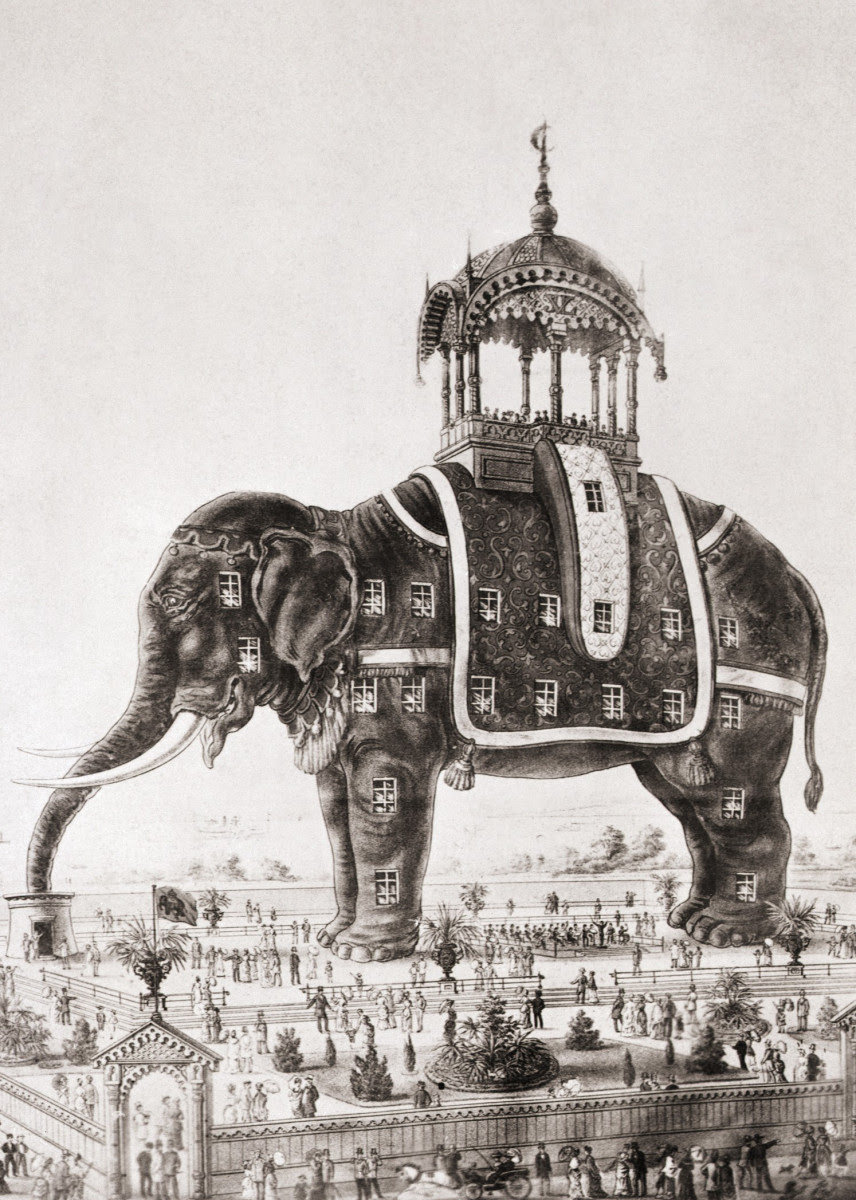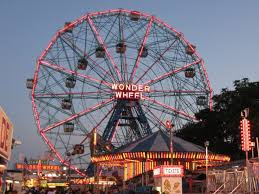Weekend, May 2-3, 2020 – Get out of town on the F train to Coney Island

SATURDAY AND SUNDAY
MAY 2-3, 2020
RIHS’s 41st Issue of

Included in this Issue:
CONEY ISLAND

CELEBRATING ISLANDS WEEK
NORTH BROTHER
WARD’S & RANDALL’S
BEDLOE’S
HOFFMAN & SWINBURNE
GOVERNORS
CONEY ISLAND
TEXT FROM CONEY ISLAND A BRIEF HISTORY.

Coney Island, one of New York’s oldest and finest tourist attractions, wasn’t built in a day. There were many reasons why this place was built, how it was built, and the consequences of the build. And they’re all very fascinating. When you vision Coney Island, you probably vision the amusement park. Coney Island is not only an amusement park, but a large neighborhood filled with many residents. Some of the extremely famous attractions of Coney Island can even be seen from a mile away, like the Parachute Jump and the Wonder Wheel. And up close, they’re even better. The ride is about to begin, so fasten your safety harness.
This is how Coney Island came to be.
Where it All Began Coney Island was an actual island back then. Coney Island’s got a rich history. Development began in the 1840s, when Coney Island wasn’t even connected to the mainland. That’s why it’s called Coney Island, despite not being an actual island. Looking on Google Maps, one can see the Coney Island creek, which gets cut off at Shell Road, and ends there. That’s because the creek used to be a river which flowed into Sheepshead Bay, but through the process of landfill (not where garbage is kept, but the process of filling in land), Coney Island was connected to the rest of Brooklyn, and was no longer an island.

When the first buildings were built on Coney Island, people who wanted to keep the island as a natural park were outraged. In the early 1900s, the city wanted to demolish all buildings south of Surf Avenue, the main avenue that runs through Coney Island, even to this day. The city took this shot, which was part of the Coney Island rebuilding process. The island still had potential, and the city knew it–they didn’t want to throw that potential away.
As mentioned, Coney Island was later connected to the mainland of Brooklyn by a process called land reclamation, or landfill. This process basically connects land to each other by creating new land from river or lake beds. The new land is called reclamation ground. In the 1920s, the city zoned the land so the land north of the boardwalk and south of Surf Avenue would be used for amusement purposes only. This was a settlement the people agreed with.

Three Parks in One Park That’s a lotta people.
During World War II, Coney Island was the largest amusement park in the country, attracting millions of visitors every year, as seen above. At its most successful time, Coney Island actually contained three amusement parks: Luna Park, Steeplechase Park, and Dreamland. Coney Island was soaring at this point. Steeplechase Park was the first of the three, built in 1862 by George C. Tilyou, whose family ran a restaurant in Coney Island.
When he visited the 1893 World’s Columbian Exposition in Chicago, he observed the Ferris Wheel, which was introduced at that World’s Fair, and decided to build his own in Coney Island. Once it was built, it immediately became the island’s biggest attraction. He added other rides as well, such as a mechanical horse race course called the Steeplechase. This is actually where the park derived its name from, and is the origin of the name of a current horse-themed rollercoaster in Coney Island, which exists where the original ride once was.
Steeplechase was the western-most park, located where the present-day MCU Park baseball stadium is. Steeplechase was also the park which lasted the longest, because unlike the other two, it made enough money to thrive. Tilyou and his family were able to update the park gradually due to its success, so new rides, such as the Parachute Jump, which exists today, opened on its grounds.
Luna Park was the second park built in Coney Island, built in 1903. The park was built atop the ground of Sea Lion Park, the first permanent amusement park in North America, which was run by Paul Boyton. Luna Park was located on the north side of Surf Avenue, on a site between West 8th and 12th Streets, and Neptune Avenue. The park was created by Elmer “Skip” Dundy and Frederick Thompson. Thompson and Dundy leased empty plots from Tilyou, and used these land plots to build Luna Park.
The old Elephantine Colossus, which Luna Park was later built over. The land leased was where the Elephantine Colossus, a seven-story tall tourist attraction built in the shape of an elephant, once stood. Unfortunately, in 1896, it caught fire and collapsed, killing many.
After the destruction of this attraction, the land was available for new use, and Dundy and Thompson purchased the land to build Luna Park on top of. The park thrived for a while.
The last park built was called Dreamland, and it was the largest, most luxurious, and “the grandest” of the three. It was built in 1904 by then-state senator William H. Reynolds. This park was built because Reynolds wanted to challenge Luna Park by making it much more elegant and upper-class, rather than Luna Park, which was noisy, chaotic, and often looked at as ‘low-class’. In order to build Dreamland, you could say he played a bit dirty: he had other people bid on the property for him in order to hide his true means of building an amusement park there. Once Reynolds won the bid, he used his political power to seize control of West 8th Street, which ran through the middle of the area. And so, Dreamland was built. With these three parks, Coney Island thrived. It thrived more than the city and its citizens ever thought it would.

LUNA PARK

STEEPLCHASE PARK
DEMOLISHED BY FRED TRUMP

DREAMLAND

ELEPHANTINE COLLOSUS
Originally intended to serve as a tourist attraction, the elephant contained novelty stalls, a gallery, a grand hall, and a museum in what would be the elephant’s left lung. The elephant’s eyes contained telescopes and acted as an observatory for visitors. Its manager claimed to see, from the elephant’s back, Yellowstone Park, Rio de Janeiro, and Paris.[4] As Coney Island became more established as a center of tourism and leisure, the elephant began to serve as a brothel as well.[5][6][7] When the elephant caught fire on September 27, 1896, it had not been used for several years.

INFANT INCUBATORS
During this time, many hospitals could not afford incubators to babies who needed it, but for some reason, Dreamland had a supply of them, so premature babies were kept there. Following the fire, news reports claimed that all the babies had died in the fire, but soon after, these reports were corrected, saying that no babies were killed. Most of the babies were saved by Sergeant Frederick Klinck of the NYPD, who made many trips into the burning Dreamland to rescue the babies.

A Century of Screams
The Wonder Wheel and AstroTower
The Wonder Wheel and AstroTower
(now demolished) seen in 2013. As we know, Coney Island is home to some very iconic attractions, that were famous both back in the day and today. Take the Cyclone roller coaster for example. The Coney Island Cyclone was and still is in use today. It is a historic wooden roller coaster that opened on June 18, 1927. It was completely renovated and reopened to the crowds on July 1, 1975. Since then, AstroLand Park invested millions of dollars to regularly update the Cyclone. After AstroLand closed in 2008, the president of Cyclone Coasters, Carol Hill Albert, continued to operate it under an agreement with the city, saving it from permanent closure and demolition. In 2011, Luna Park took over operation of the Cyclone. The Cyclone was declared a New York City landmark in July 12, 1988, and was placed on the National Register of Historic Places on June 26, 1991.
The Parachute Jump
is a 250 foot tall amusement ride, originally located in Steeplechase Park. The Parachute Jump was actually originally built for the 1939 New York World’s Fair in Flushing Meadows, Queens. It was moved to where it is today, then became part of Steeplechase Park in 1941. It is the only portion of Steeplechase Park still standing today. The ride officially closed in 1964 when Steeplechase Park closed, and today it’s no longer in use, but you can still visit it and snap some cool pictures. Fun fact: the Parachute Jump can be seen getting destroyed in the blockbuster film Spider-Man: Homecoming.
Deno’s Wonder Wheel is a 150 foot tall eccentric Ferris wheel located in the heart of Coney Island. It is actually an eccentric wheel, which are different from regular Ferris wheels because, if you ever visit the wheel and take notice, most of the passenger cars slide on rails between the hub and the rim as the wheel rotates. This is a factor that makes the Wonder Wheel so iconic. If you want to hop aboard the Wonder Wheel, but don’t want to deal with the car you’re in sliding back and forth 150 feet up in the air, you can hop in the white cars, which ride the edges and do not move, like a typical Ferris wheel.


WONDER WHEEL
PARACHUTE JUMP

NATHAN’S

The underside of the Hell Gate Bridge photographed by Berenice Abbott, 1937 (c)
Below is a personal note from Judith Berdy

EDITORIAL
What a wonderful way to spend a day that is gloomy, thinking of a Nathan’s hot dog at Coney Island.
Hope you enjoy your trip to Brooklyn!
Judy Berdy
Text by Judith Berdy
Thanks to Bobbie Slonevsky for her dedication to Blackwell’s Almanac and the RIHS
Thanks to Deborah Dorff for maintaining our website
Edited by Melanie Colter and Dottie Jeffries
Copyright © 2020 Roosevelt Island Historical Society, All rights reserved.Our mailing address is:
rooseveltislandhistory@gmail.com

Leave a comment